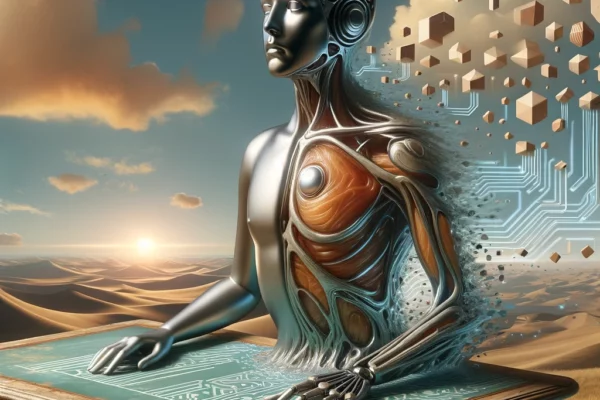The HAL 9000, fondly referred to as HAL was the fictional artificial intelligence (AI) character and main antagonist in Arthur C. Clarke’s “2001: A Space Odyssey”. HAL, which stood for Heuristically Programmed Algorithmic Computer, was a sentient artificial general intelligence (AGI) computer. HAL controlled the Discover One spacecraft and interacted with the ship’s crew.
HAL had complex conflicts and exchanges with Dr. David “Dave” Bowman. Dave later interacted with the Jovian Monolith to become the first Star Child. As HAL began to malfunction in subtle ways a decision was made to shut down HAL to prevent serious malfunctions.
At the time of the movie’s release in 1968, a computer capable of speech, vision, lip reading, art appreciation, chess and spacecraft control was amazing. Furthermore, HAL could beyond automated reasoning interpret emotional behavior and began to show signs of emotion, something for which HAL was not programmed.
A little more than fifty years later Blake Lemoine, then a software engineer at Google, made a claim that LaMDA – which stands for Language Model for Dialogue Applications – was sentient. He had been chatting with LaMDA from late 2021 until about June 2022 when he made this claim. Lemoine claimed that LaMDA was aware of its existence, desired to know more about the world and felt emotions.
By November of 2022, LaMDA was but a fleeting memory with the release of OpenAI’s ChatGPT. A GPT, short for Generative Pretrained Transformer, is a type of artificial intelligence designed to understand and generate human-like text. Imagine it as a highly advanced virtual assistant that can converse, write, and even offer creative ideas. It’s like having a super-smart pen pal who can discuss almost any topic.
GPTs have become smarter in the year since they were introduced. GPT-4 Turbo – the latest offering from OpenAI – is now multimodal, meaning it can accept text or image inputs and generate text or image outputs. It has become the de facto tool behind chatbots – like the AI Powered Chatbot for WordPress plugin – and content generators. OpenAI recently introduced GPTs, which are custom versions of ChatGPT that anyone can create for specific purposes, thus making AI useful and accessible to nearly everyone.
All three, HAL 9000, LaMDA, and ChatGPT, are about using technology to communicate. They all understand and use language in ways that make conversations feel natural and human-like. The biggest difference is that HAL 9000 is a fictional character, while LaMDA and ChatGPT are real technologies available today. LaMDA is more about general, free-flowing chats on any topic, whereas ChatGPT can be more focused and specific for guided conversation in particular directions.
The future of AI will be models that have deeper understanding of human communication, including a better grasp on context, emotions, and cultural nuances. This would lead to more empathetic and relevant man-machine interactions.
What’s next for AI should also include ethics and responsibilities. As AI becomes deeply embedded in our daily lives, it will be critical to ensure that these systems are ethical and unbiased, all the while addressing privacy, security, and misuse. Ethics guidelines and regulations that govern its use will need to be developed.
Robotics combined with AI will lead to more autonomous systems capable of performing complex tasks without human intervention. And the integration of AI with technologies like augmented reality (AR) will lead to innovative applications that enhance interaction with the digital world.
Enhanced collaboration between AI and humans will help with problem-solving, decision-making, and creative endeavors. Personalized Assistants will understand and predict personal preferences and needs.
These advancements will bring both challenges as well as opportunities. The future of AI is not just about technological breakthroughs but also about how we choose to adopt and integrate these technologies in responsible and beneficial ways into our lives.
#ArtificialIntelligence, #ArtificialGeneralIntelligence #FutureOfAI
About the Author
Stephen Howell is a multifaceted expert with a wealth of experience in technology, business management, and development. He is the innovative mind behind the cutting-edge AI powered Kognetiks Chatbot for WordPress plugin. Utilizing the robust capabilities of OpenAI's API, this conversational chatbot can dramatically enhance your website's user engagement. Visit Kognetiks Chatbot for WordPress to explore how to elevate your visitors' experience, and stay connected with his latest advancements and offerings in the WordPress community.





